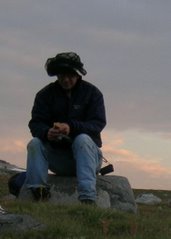
I got to thinking about make believe today...when I worked at the Make Believe Kingdom...there wasn't much else!...and not so sure there's much more hereabouts in the Valley...
Oh, Reality...where are you!
brb...well..I did a couple searches then put together "make believe reality"...which actually has a kinda nice ring!..and it turned up this book..
PRISONERS FROM NAMBU: Reality and Make-Believe in 17th Century Japanes Diplomacy. By Reinier H. Hesselink. Honolulu: University of Hawai'i Press. 2002. xii, 215 pp. US$47.00, cloth, ISBN 0-8248-2409-1; US$24.95, paper, ISBN 0-8248-2463-6.
lemesee if it's on Amazon...brb...not much...
but it's about Japan...and how they encountered the West....in fact a lot of Peoples encountered the West...but Japan was kinda different in that they could tell the West to bugger off and make it stick...they were isolated for..brb...
quote
In 1639, the shogunate began the isolationist sakoku ("closed country") policy that spanned the two and a half centuries of tenuous political unity known as the Edo period. The study of Western sciences, known as rangaku, continued during this period through contacts with the Dutch enclave at Dejima in Nagasaki. The Edo period also gave rise to kokugaku, or literally "national studies", the study of Japan by the Japanese themselves.[23]
On March 31, 1854, Commodore Matthew Perry and the "Black Ships" of the United States Navy forced the opening of Japan to the outside world with the Convention of Kanagawa.
On March 31, 1854, Commodore Matthew Perry and the "Black Ships" of the United States Navy forced the opening of Japan to the outside world with the Convention of Kanagawa.
unquote
quote
"a long rich history with an evolving culture"
from Larry King interviewing a reporter on the Women and Kids story..."they'll all go to Canada"...
unquote
The "black ships" always sounds so ominous!...brb...
quote
The Black Ships (in Japanese, 黒船, kurofune) was the name given to Western vessels arriving in Japan between the 15th and 19th centuries. In particular, it refers to Mississippi, Plymouth, Saratoga, and Susquehanna, that arrived in 1853 at Uraga Harbor (part of present-day Yokosuka) in Kanagawa Prefecture, Japan under the command of United States Commodore Matthew Perry. The word "black" refers to the black color of the older sailing vessels, and the black smoke from the coal-fired power plants of the American ships.
unquote
a "clash of cultures" Bergamini called it...brb....
a curio..
quote
unquote
DavidDavid



No comments:
Post a Comment